Light and silky smooth, this chocolate Swiss meringue buttercream frosting recipe is sure to become a favorite.
Packed with rich chocolaty flavor, this frosting is great for icing cakes or using between cake layers.
Elevate your chocolate frosting with this meringue buttercream recipe! Great for using on your favorite chocolate or vanilla cake, this light and smooth buttercream starts with a base of egg whites, cooked with sugar to create a fluffy meringue.
This frosting is velvety in texture and has a rich, buttery taste. Though less sweet than traditional buttercream, this frosting is delicious in its own right!
What is Swiss Meringue Buttercream?
Here in America, we’re most familiar with traditional buttercream. This frosting recipe involves whipping butter and sugar into a spreadable consistency. Traditional buttercream does not contain eggs and is not cooked in any way.
Swiss meringue buttercream, on the other hand, contains egg whites and must be cooked to ensure safe consumption. The eggs are combined with sugar to create a meringue base, then butter is whipped into the egg whites which creates a velvety, fluffy frosting!
Swiss vs. Italian Meringue
How is Swiss different from Italian meringue, you might ask? Actually, they contain very similar ingredients but are prepared differently.
Though these two popular buttercreams are both made with egg whites, they differ in how the egg whites are prepared.
Swiss meringue involves cooking the egg whites in a double boiler while Italian meringue involves cooking the egg whites slowly by adding a stream of hot syrup to the eggs as they’re being whipped.
How to Use Swiss Meringue Buttercream
While Swiss meringue is delicious, it’s important to note that it’s not suitable for every baking project. The light, delicate texture of this buttercream is not ideal for intricate piping and decorating.
Only use this frosting if you’re planning to fill cake layers or cover a cake in frosting.
Swiss meringue is also sensitive to temperature and won’t hold up well in heat or humidity.
Cakes decorated with Swiss meringue will need to be stored in the fridge, then brought up to room temperature before serving.
Ingredients:
- 1 cup granulated sugar
- 4 egg whites
- Pinch of salt
- 4 oz. bittersweet bar chocolate, chopped
- 1½ cups (3 sticks) butter, softened and cut into ½ in. pieces
- 2 teaspoons vanilla extract
Note: Before we get started, keep in mind that meringue buttercream requires a lot of mixing – that is what gives it its luscious texture!
Stand mixers are key when making meringue buttercream because electric hand mixtures are not durable enough. This is because an electric mixer could burn out before your meringue is ready.
Also, you probably don’t want to hold a hand mixer for 30 minutes!
Part 1: Making the Meringue
1. Combine the salt, egg whites and sugar in the top pan of a double boiler.
To ensure you get the best results, stick with real eggs for this recipe. The Wilton Test Kitchen has tried this recipe with egg white substitutes and there’s no comparison to using real eggs.
It’s also important to make sure your mixing bowl and utensils are completely clean and grease-free. Any fat can disrupt the meringue from forming, so make sure everything is washed, clean and dry before starting!
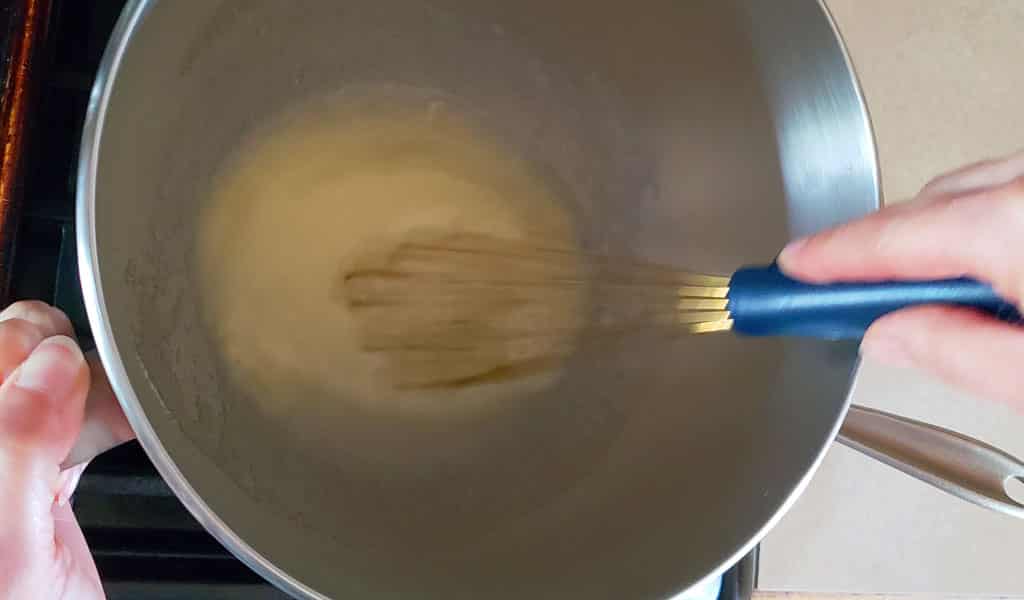
2. Whisk the egg mixture constantly until it reaches 160 degrees F on a candy thermometer and the sugar is fully dissolved.
This should take anywhere from 15 to 25 minutes. If you don’t have a candy thermometer, you can check to see if the sugar is dissolved by placing a drop between two fingers. If the sugar is still grainy, keep cooking.
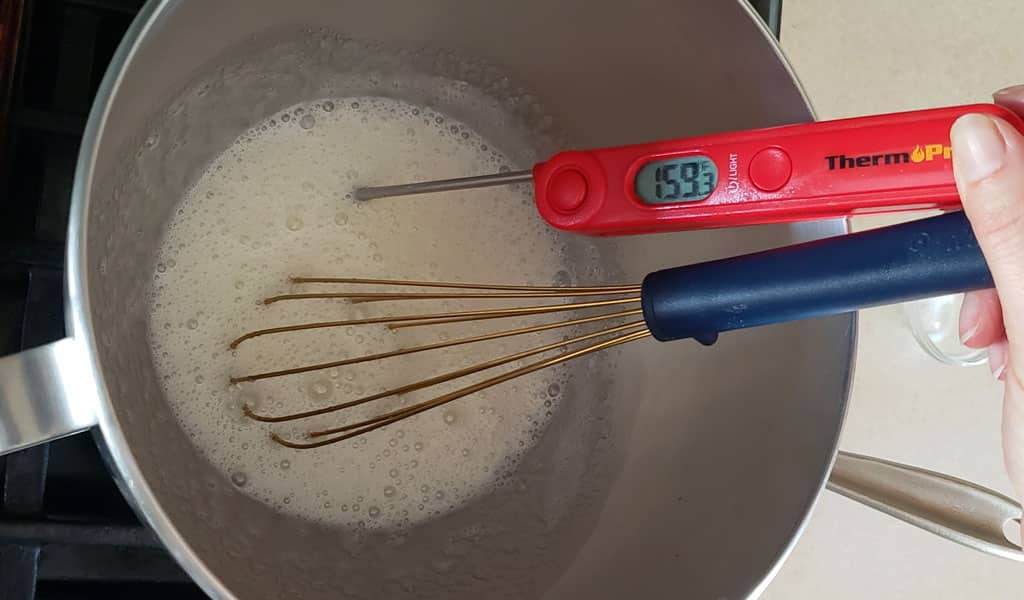
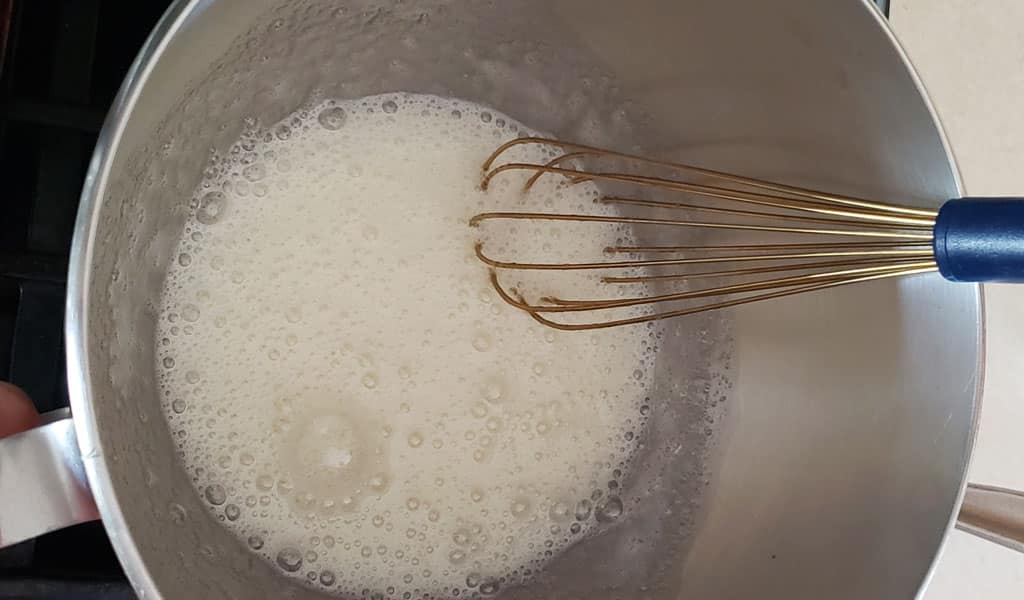
3. Once your egg mixture is ready, transfer it to the bowl of your stand mixer.
4. Using the whisk attachment, beat the egg mixture at a high speed until it cools to room temperature, about 15 to 30 minutes. The time will vary depending on the temperature of your kitchen and could take longer than 30 minutes if it’s a warm day.
You can speed up the cooling process by holding an ice pack to the side of the bowl. As the mixture cools, you’ll start to see a change in consistency. That’s your meringue forming!
You will know your meringue is ready when it’s cooled to room temperature and stiff glossy peaks form. This means that when the whip attachment is pulled up, the meringue stands up straight.
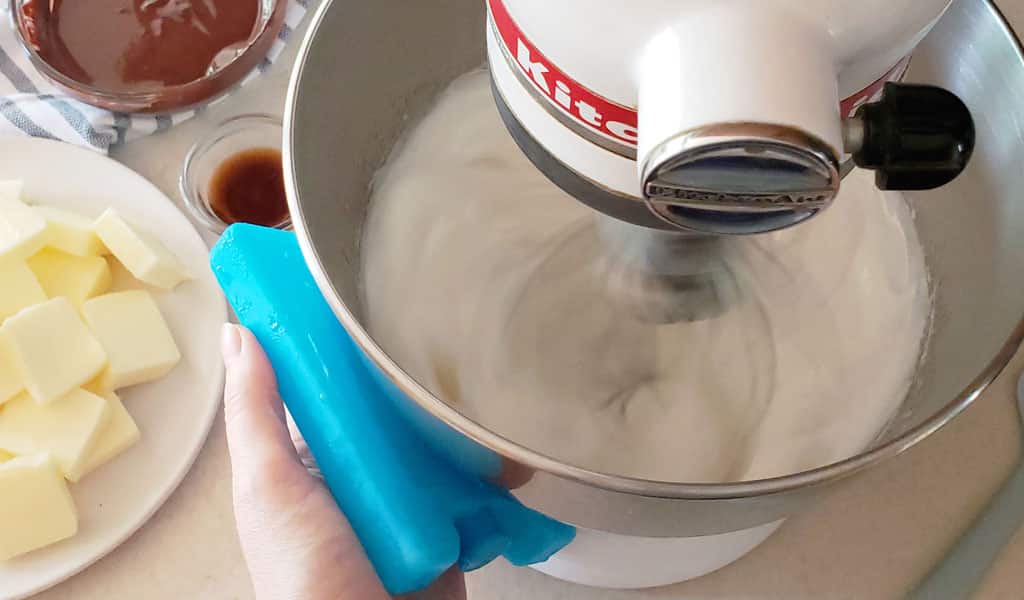
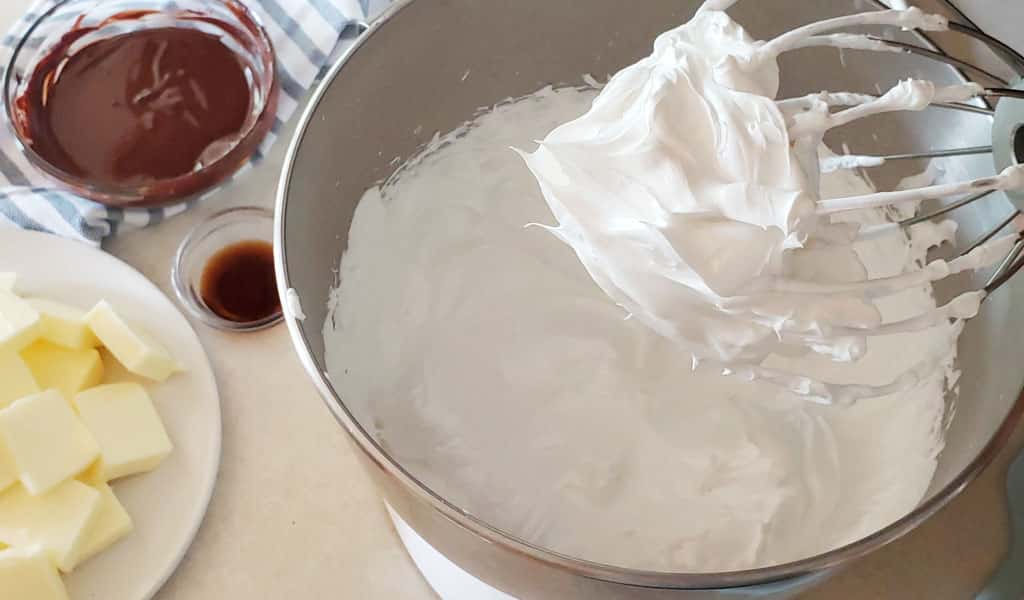
Part 2: Melting the Chocolate
As your meringue mixes, you can start melting the chocolate.
1. In a medium microwaveable bowl, melt the chopped chocolate at half (50%) power for 1 minute. Stir to distribute the heat.
Continue to microwave on 50% power in 30-second intervals, stirring between each interval, until chocolate is melted (you can also melt your chocolate on top of the stove in a heavy saucepan over low heat).
This should take anywhere from 15 to 25 minutes. If you don’t have a candy thermometer, you can check to see if the sugar is dissolved by placing a drop between two fingers. If the sugar is still grainy, keep cooking.
3. Stir until smooth and set aside to cool slightly.
While it may be tempting to use chocolate chips for this, we suggest sticking with the baking chocolate bar. Chocolate chips contain stabilizers to help maintain their shape and have a tendency of burning when used for melting. Save chips for cookies instead.
We used a bittersweet baking bar for our frosting. If you prefer, you can also use semi-sweet or milk chocolate.
Part 3: Adding the Butter and Flavoring
1. When your meringue is ready, remove the whisk attachment and attach the paddle attachment. We don’t want to incorporate too much air into the buttercream at this stage.
The paddle attachment will help mix in the butter without deflating (or inflating) our buttercream.
This next step is one of the most important in Swiss meringue buttercream – and perfectly softened butter is crucial. If the butter is too cold, it will not emulsify into the meringue. If the butter is too warm, your buttercream may become soupy.
Check out our post on How to Soften Butter to make sure your butter is at room temperature.
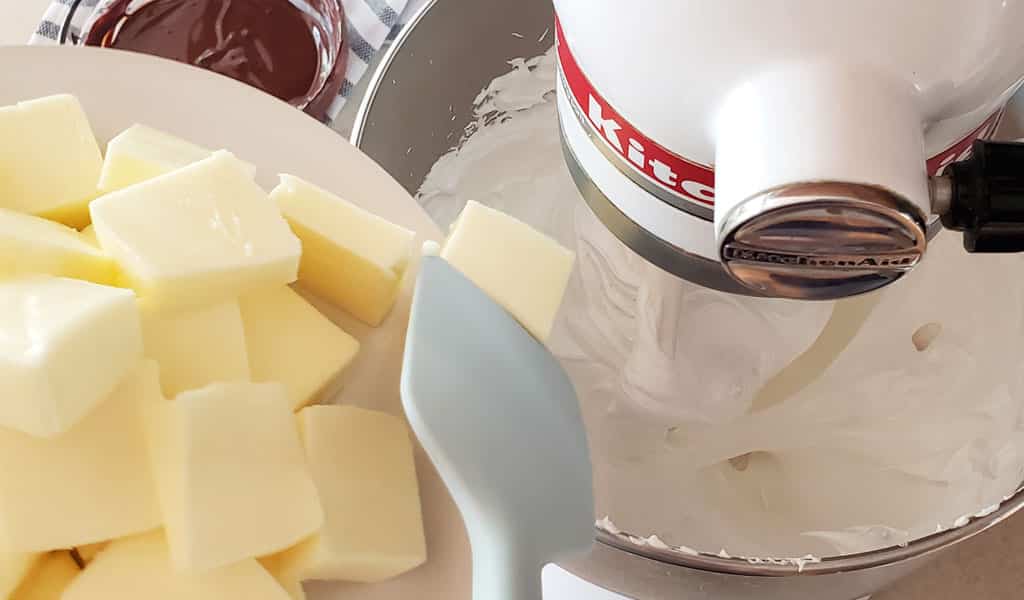
2. Gradually add the butter, 1 piece at a time, beating on medium speed. Allow each piece of butter to fully incorporate before adding another.
Scrape down the bottom and sides of the bowl as necessary.
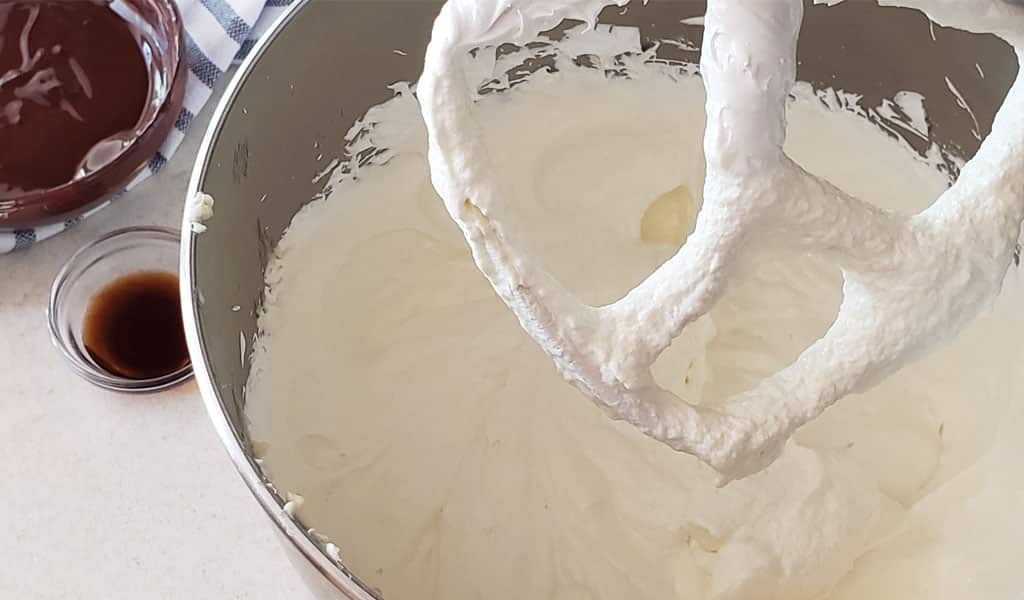
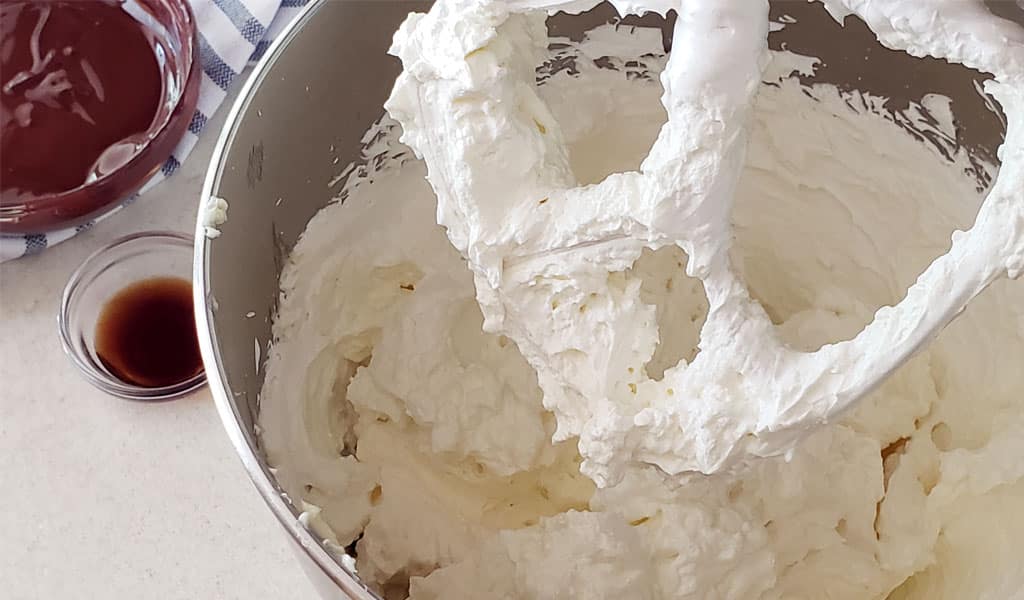
3. Add the vanilla extract and beat until combined.
Since we’re basically adding a fat to a liquid, the mixture will look curdled at first. This is nothing to panic about. The goal is to emulsify the two components and, before you know it, the mixer will smooth out to the proper consistency.
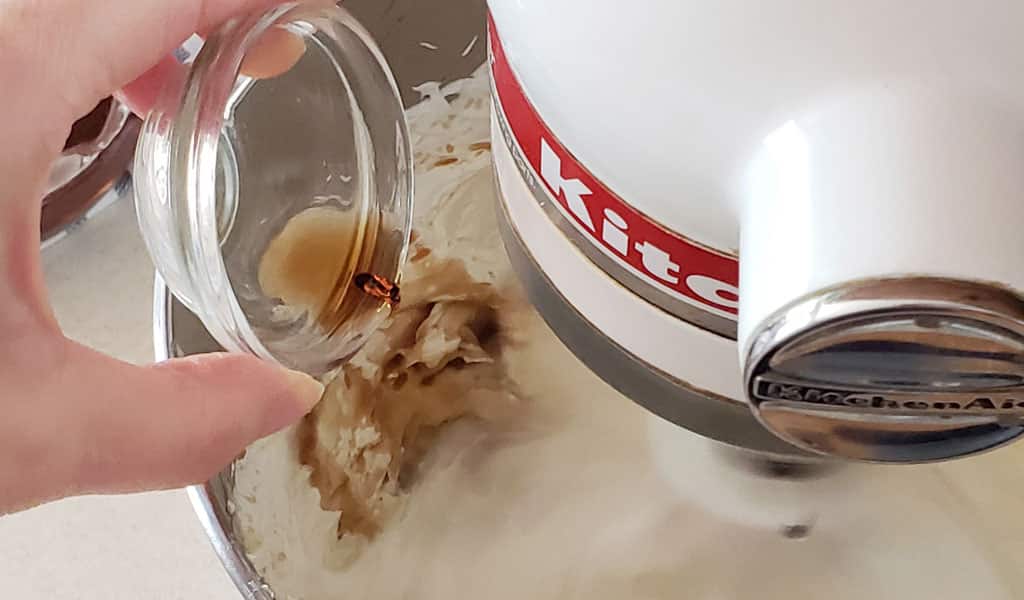
4. Once your buttercream is smooth, gradually pour in the melted chocolate and beat until well-combined, scraping down the bottom and sides of the bowl as needed.
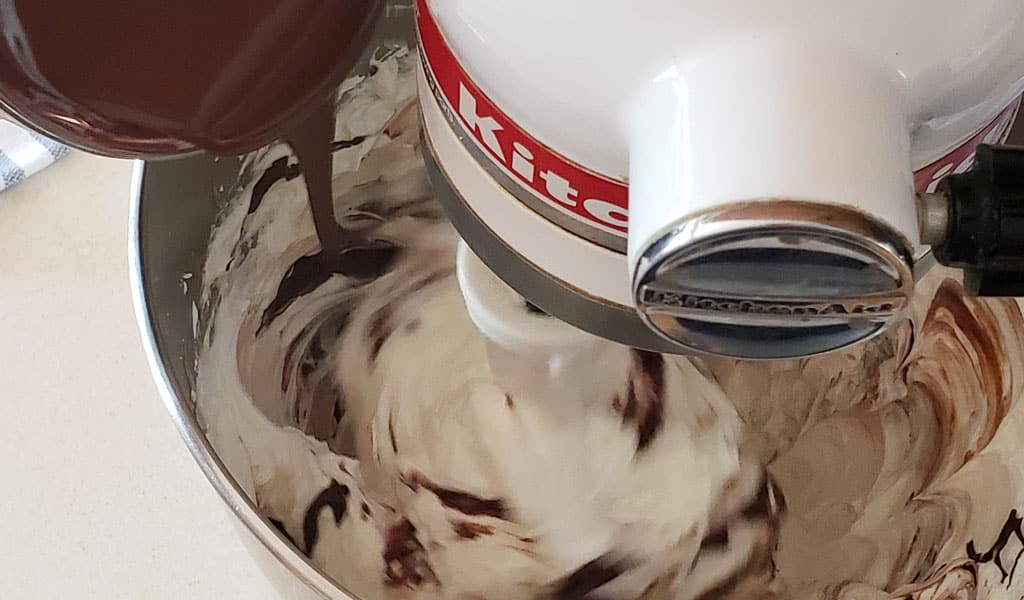
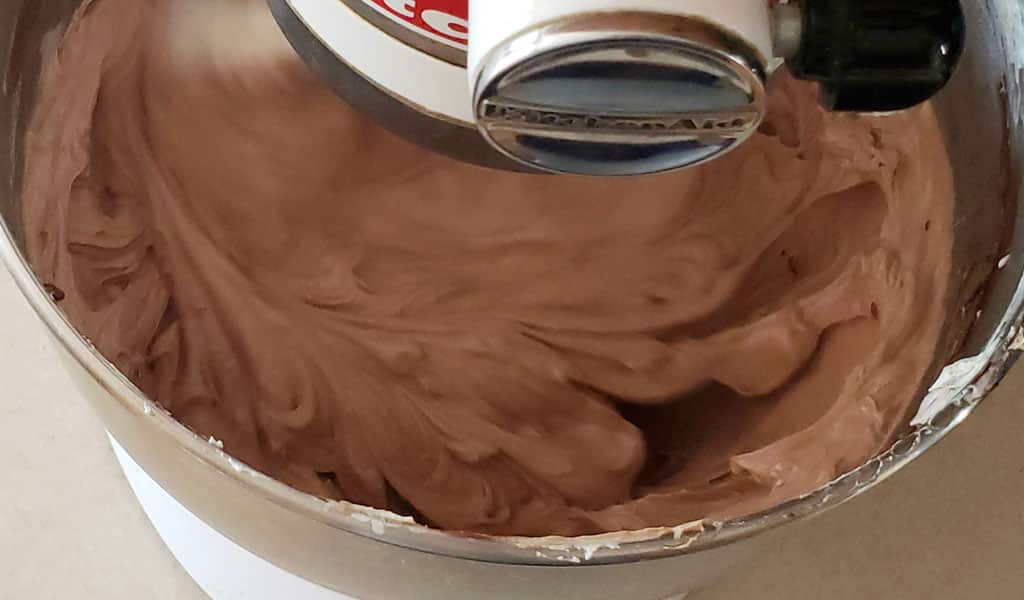
And now you have chocolate Swiss meringue buttercream!
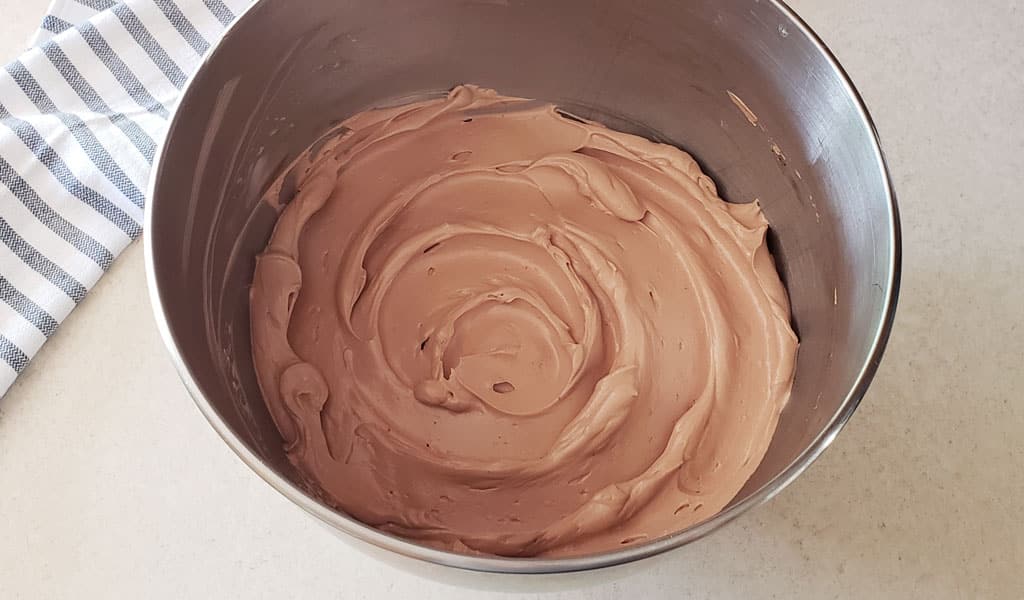
How to Store Chocolate Swiss Meringue Buttercream
Swiss meringue is best used as soon as it’s made. However, if you must make it in advance, you can store it in the refrigerator for up to 1 week. You can also freeze this buttercream for up to a month. If you choose to store the buttercream, bring it back to room temperature and re-whip before using.
Likewise, a cake that is filled or covered with Swiss Meringue buttercream should not be served straight from the refrigerator. For best results, allow it to sit at room temperature before serving.

Have you tried making Swiss meringue buttercream? We’d love to see how it turned out! Share a picture of your cakes, cupcakes or other buttercream-covered treats on Instagram and tag us @wiltoncakes!
If you enjoyed this post, check out these out!
- Buttercream Frosting Tips and Tricks
- 7 types of Buttercream Frosting
- How to Make Flavored Buttercream Frosting
- 10 Buttercream Cake Decorating Techniques
- How to Pipe Buttercream Daises and Buttercream Carnations
- How to Make Italian Meringue Buttercream
- 11 Holiday Buttercream Recipes
- How to make Marshmallow Buttercream Frosting
- How to Make Cinnamon Buttercream Frosting
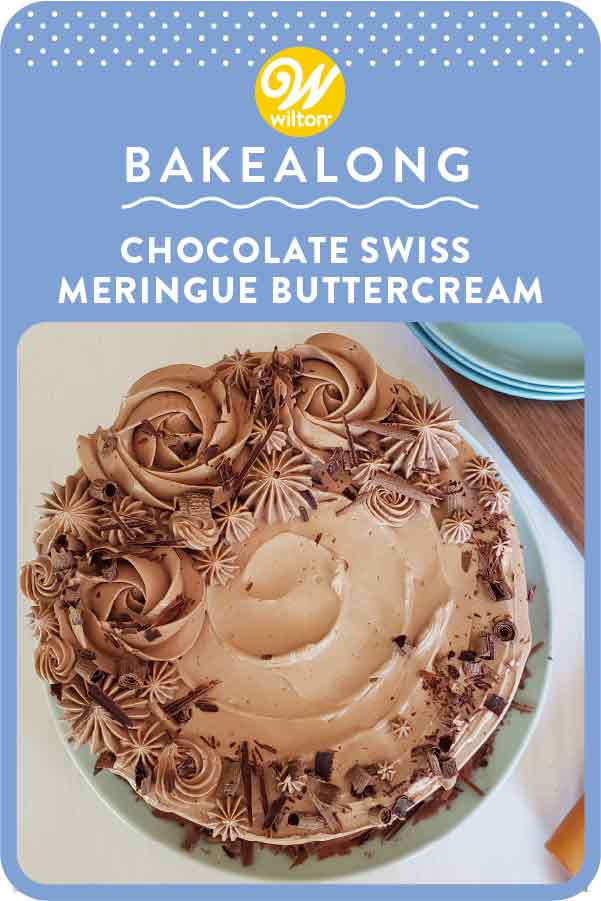


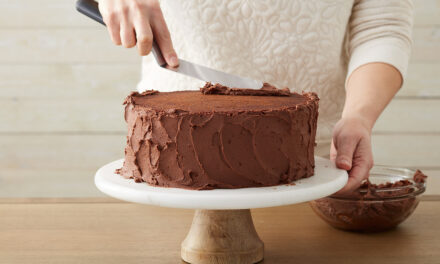
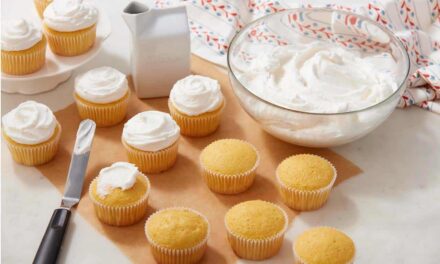

You have shared a delicious and yummy recipe here. I will try to taste it soon. Thanks and keep posting more!!!
You have a typo at step 2 of the chocolate melting. It looks like a copy and paste error from step 2 of the egg whisking step.